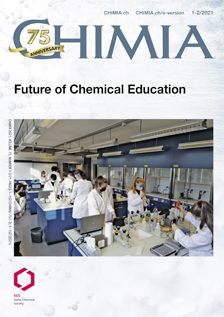Organic Chemistry for First Year Medical Students: Addressing the 'Grand Public'
DOI:
https://doi.org/10.2533/chimia.2021.27PMID:
33637143Keywords:
Chemistry teaching, Tertiary levelAbstract
Experiences from 20 years of teaching organic chemistry at the Medical School of the University of Geneva are recollected. Emphasis is on the question how to address a large audience without particular passion for chemistry. The key lesson learned is to offer a substantial justification for every topic right at the beginning, before the basics are covered. For instance, the course opens with vancomycin resistance, achieved by changing one functional group, even one atom into another, and introductory topics are then developed literally on the structure of a beautifully complex natural product (relation of molecules, functional groups and atoms, introduction of functional groups, the octet rule, hybridization, later on also peptide chemistry, stereochemistry, etc.). Tamiflu is launched right afterwards as a possible justification why medical students should learn reaction mechanisms, long before the concerned reaction, the transformation of an acetal into a hemiacetal, is discussed. Not all classical teaching topics are compatible with such ' relevance-triggered teaching ' (nomenclature certainly not, nor halogenoalkanes, aromatic substitutions, alkynes, most of alkenes, spectroscopy, etc.). Other topics deserve more attention, like the more complex cyclic structures of sugars and steroids in the structural part and carbonyl chemistry, including catalysis, as the center of the reactivity part of the course. Difficult to measure, such ' relevance-triggered ' course restructuring, inconceivable from a classical educational point of view, has been overall surprisingly well received, although definitely not by all students.Downloads
Published
2021-02-28
Issue
Section
Scientific Articles
License
Copyright (c) 2021 Stefan Matile

This work is licensed under a Creative Commons Attribution 4.0 International License.
How to Cite
[1]
Chimia 2021, 75, 27, DOI: 10.2533/chimia.2021.27.







